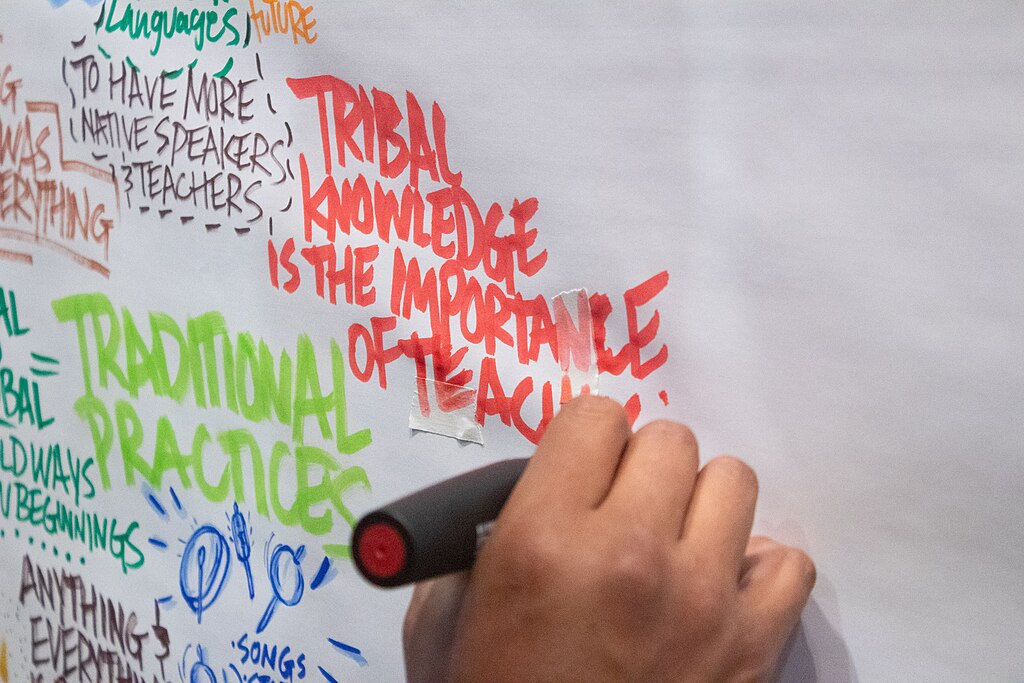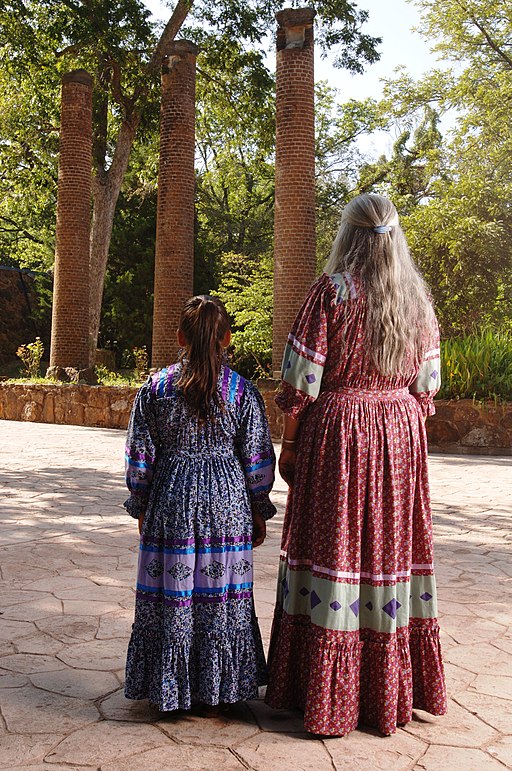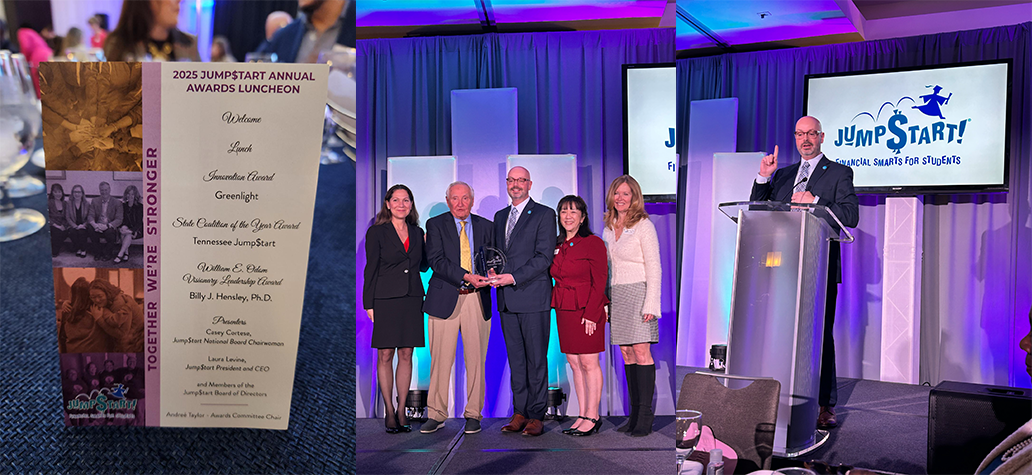Abstract- Father Sky
Since the onset of colonization, Native American communities have been forced into different facets of assimilation to survive. As discussed in the article, “Boarding Schools and Western Education Related Trauma,” the western education models historically and presently create barriers in accessing knowledge for Native Americans. This article discusses indigenous-based models of financial education and the importance of providing and maintaining these culturally relevant curricula in Native communities.
Prayer, Song, and Introduction- East/Sweetgrass/Beginning
Nkweshkoodaadidaa Ekobiiyag | Meet Me By The Water
(Anishinaabe/English)
“Way waya hey ha waya hey ha waya-ho way ah ho
Way waya hey ha waya hey ha waya-ho way ah ho
Wayo way ya-hey hi ya-ho way hio
Wayo way ya heyo
Nakweshkodaadidaa ekobiiyang
Let’s meet by the water
Gabe dibik nagamoyang.
All night we all sing.
Nakweshkodaadidaa ekobiiyang
Let’s meet by the water
Anaami-gizhig dewe’igeyang.
Under the sky we all drum.
Giwaabamaanaan maashkinewaabikizid dibiki-giizis
We all see her the full shaped moon
Apiichi bagosendamang.
While we all have hope.
Way waya hey ha waya hey ha waya-ho way ah ho
Wayo way ya-hey hi ya-ho way hio
Wayo way ya heyo”
Gitchi-manadoo, Creator, chii miigwetch for the sacrifices of our ancestors, that we may have a prosperous present and future. Please guide us on a path that our sacrifices today may lead to future generational thriving and prosperity. Help us use our traditional tools, knowledge, and resources alongside those currently available to navigate the modern world in which we live. Thank you for our allied brothers and sisters for sharing wisdom and support on this journey. We give thanks for the gifts of the Creator and humbly ask for guidance to a brighter, equitable future for all of Earth’s beings to thrive. Chii Miigwetch, Many Thanks
(Anishinaabemowin/English).
This is one piece of a seven-part series unpacking the complexities surrounding financial education, including financial well-being, for Native American communities, utilizing interviews from prominent Native American individuals across the financial education sector and accessible literature. Together, these seven pieces create a snapshot of this landscape.
The National Endowment for Financial Education’s Personal Finance Ecosystem is a visual model of the interconnected concepts that influence an individual’s financial well-being. Financial Knowledge & Access and Foundational Factors, including family and culture, are core concepts in the framework and integral, foundational pillars within this ecosystem. Financial knowledge and skills (i.e., financial literacy) is a core concept in this personal finance ecosystem. Financial knowledge is defined as, “the objective mastery of financial definitions, terms, and concepts,” and financial skills, “determine whether an individual can make decisions with that knowledge.”
History- South/Cedar/Growth

Native American communities are stewards of Mother Earth and are excellent natural resource managers. Prior to colonization, Native American communities had created a symbiotic relationship with plants and animals to ensure their prosperity. This included generating controlled burns, the intentional burning of vegetation, ensuring fertile soil for crops to grow, and creating balance within animal populations. As described in the article, “The Origin Story: Manifest Destiny’s Creation of Economic Deserts and the Devastation of Subsistence Economy,” these communities were displaced to locations that were inadequately sustaining life and devastated both the human populations that were displaced and the natural resources that were overtaken by European settlers unfamiliar with the practices within specific geographic locations.
Despite the innate abilities to manage resources, Native American communities are behind in levels of financial literacy retention compared to other communities. The 2015 National Financial Capability Study (NFCS) from FINRA showed that Native American respondents were experiencing higher financial distress and lower levels of financial capability. However, the discussion noted that the data showed these respondents had strong social networks to make ends meet, were more likely to take advantage of financial education classes, and were more likely to have a household budget. Similarly, in “Experiences of Discrimination and Financial Well-Being in Native Communities,” a 2023 public opinion poll from National Endowment for Financial Education, the results showed that 70% of respondents agreed with the statement, “Regardless of my financial situation, there are people who appreciate me as a person.”
The article, “Boarding Schools and Western Education Related Trauma,” discusses Native American higher education institutions and the need for culturally conscious education models and curricula. Tribal colleges and universities gained recognition under the Higher Education Act of 1965 and were granted a pathway to funding through the Tribally Controlled Colleges and Universities Assistance Act of 1978. Since the opening of the first tribal college in 1968 on the Navajo Nation, there are now 37 tribal colleges and universities across the United States. According to an independent study conducted by the American Indian Higher Education Consortium, for every $1 invested in tribal colleges and universities, the return is at least $5.20 annually.
Understanding the need for a culturally adaptive financial education curriculum, First Nations Development Institute and the Fannie Mae Foundation developed the first Native American-specific personal financial education curriculum “Building Native Communities: Financial Skills for Families,” in 2000. This curriculum was, “designed to help Native communities adapt their traditional skills to the wise management of financial resources,” and covers budgeting, saving, accessing credit, and making smart consumer decisions. As the curriculum evolved, an accompanying instructor’s guide was developed to assist practitioners in delivering the training to their respective Native communities. The curriculum can be taught to a pan-Native audience1 or adapted to specific Native communities.
Twelve years after the launch of this curriculum, the Oweesta Corporation and the Key Bank Foundation embarked on a five-year study to analyze the effectiveness of this specific curriculum in Native communities. The study concluded that this Native-specific financial education, “not only works, but that it has been critical in promoting long-term behavioral change,” and that culturally relevant content is key to conveying financial concepts to their respective audiences effectively. In response to this study, Oweesta Corporation developed “Financial Coaching for Families,” for practitioners engaging in one-on-one financial coaching with clients; “Financial Empowerment for Teens & Young Adults,” a youth-specific Native financial education curriculum; and “Financial Confidence for Elders,” an elder-specific Native financial education curriculum. In 2023, Oweesta Corporation also published the following curricula to support financial practitioners in Indian Country: “Coaching for Credit Building,” financial education specific to one-on-one credit interventions; “Financial Coaching for Families Next Level,” next level financial coaching; and “Trauma-Informed Financial Practitioner,” a course designed for Native financial practitioners to recognize and address financial related trauma.
The policy convening, “Rethinking Financial Education to Support Diverse Cultures,” a policy convening hosted by NEFE on February 11, 2021, captured anecdotal evidence of the need for culturally-responsive financial education for diverse communities. Key highlights were that different communities will impact mental models and personal narratives in ways that inform consumer decisions, the definition of financial well-being is unique to each community, and financial education should be culturally-aligned with its intended audience.
The 2022 study “Culturally Responsive Teaching: A Critical Piece in the Development of an African American Women’s Financial Self-Efficacy/Competency, Relatedness, and Autonomy”— found that experiences and stories shared from educators allowed the financial literacy course participants to better relate to the content taught. The authors found that using materials that were at an appropriate level, in addition to a variety of hands-on activities in a collaborative learning environment, effectively creates a cultural community for participants with similar lived experiences and backgrounds that supports improved financial self-efficacy. Similarly, a 2019 study — “Pre-Service Teachers’ Perception of Financial Literacy Curriculum: National Standards, Universal Design, and Cultural Responsiveness”—which evaluated the reception of five financial education curricula on youth with special needs concluded that financial education curricula needs to be adapted to specific demographics and cultural backgrounds.
Though research is still limited, it is clear that culturally adapted education is effective for diverse communities. Because of the recent trauma related to the boarding school experience for Native communities, it is especially important to incorporate education that is uplifting multiple aspects of culture and tradition while simultaneously teaching western economic concepts.
Discussion- West/Tobacco/Maintenance
“Financial education is intrinsic within our teachings prior to colonization, prior to the monetary system,” Chrystel Cornelius (Ojibwe,Oneida), CEO of Oweesta Corporation expressed. “We were amazing resource managers. We worked with the seasons, we worked with natural environments, we had vast trading and economic viable liveliness throughout the United States.” Nainoa Logan, fund developer and business consultant, and Ka’iulani Kauihou, program manager of Waianae Economic Development Council, shared the importance of creating indigenous-rooted financial education for Native Hawaiian communities.
“It was not enough to just translate each western concept, replace it with words and call it Hawaiian. The process of creating indigenous financial education involves Native Hawaiian teachings and concepts that have been passed down for generations because financial responsibility goes right along with nature and land resource responsibility and management."
(interview, July, 2023)
“So I do feel like financial education is changing to be more mindful of culture and community and historical injustice.” (interview, Jamie Gloshay, July 20, 2023) Financial education rooted in Native American values allows Native individuals to partake in the systems that we are forced into and honor culture and tradition. “I think financial education goes deeper than just personal wealth,” stated Lanalle Smith (Dine), senior program officer of Oweesta Corporation. “It ties into a lot of what we have done historically and propels us to think about the future and what we want for our children and grandchildren.”(interview, September 28, 2023)
Shawn Spruce, host of Native America Calling and winner of the FINRA Investor Education Foundation’s 2021 Ketchum Prize, noted that there is no one-size-fits-all approach to financial education and flexibility is key to delivering financial education to specific communities. He mentioned that Native American communities are unique in that some navigate trust land issues in the home purchase process, or they might have Individual Indian Money (IIM) accounts with the U.S. Department of the Interior that have different tax obligations. (interview, August 2023) Another unique financial consideration for a few Native American communities, raised by Dr. Vanessa Esquivido (Nor Rel Muk Wintu, Hupa, Xicana), is the per capita payments. (interview, July 19, 2023) Where there is a large misconception that Native American tribes are making large sums of dividends from casino revenues, there are tribes that are fortunate to have payouts ranging from a few thousand dollars a year to hundreds of thousands paid out from minor’s trust funds.
In addition to creating culturally adaptive financial education, Paul McHorse (Taos Pueblo), owner and senior planner of First Nations Eagle, articulated the critical need for financial education in all American communities and recognized that financial education is not provided in government schools. (interview, July 17, 2023) Furthermore, Dawn LeBeau (Lakota), emphasized the demand for reliable, community-based, and age-appropriate financial education. Ideally, this education is paired with community financial resources that can reinforce knowledge with positive behaviors. (interview, July 14, 2023) However, Ted Piccolo (Colville), senior director of Indigenous Futures at Mission Driven Finance, noted that basic financial education as a one-off class is not enough and that it is not sustainable to have only one entity within a community providing this critical education. It needs to be within the school systems for the youth and at multiple community organizations for adults and elders because each decade of life has different financial demands, as well as financial preparations and maintenance for the future decades. (interview, August 2023)
From the larger perspective, Professor Matthew Fletcher (Anishinaabe),Harry Burns Hutchins Collegiate professor of law and professor of American culture at the University of Michigan, highlighted the big picture at the tribal government level in managing financial literacy in Native American communities. Capitalism and financial education are aimed at the individual, personal finance level. However, tribal governments manage whole governing bodies and land, just as any city or state government. The conflicting priorities arise when citizens are voting on larger financial decisions for community infrastructure versus individual payouts from settlements. He also raised the colonially devised issuance of blood quantum regulations for tribal memberships that most tribes are still implementing. This is also an individualized concept that is another component used in the genocide of Native nations. (interview, May 2023) “Understanding finances on an individual and community level must be the emphasis within Native communities,” added Christopher Cote (Anishinaabe), business development impact manager at First American Capital Corporation. (interview, July 2023) Moreover, Paul McHorse sees financial education at the macro-level uniting not only community members within each tribe, but uniting tribes in working together. If tribes worked together, he shared they would have a, “financial understanding of what comes out of working in teams, what works in coming together as groups and sharing resources, sharing knowledge and overcoming obstacles that have been put in place since the beginning. We’ve been divided and we are conquered as long as we maintain divided and we will continue to be lacking in our financial progress.” (interview, July 17, 2023)
Chantay Moore (Dine), CFEd, MBA and director of Native American Financial Literacy Services, discussed the buying power of the Native dollar for Native economies, and the integral role that financial education has in wielding this power for increasing the stability of Native economies. (interview, July 13, 2023) As discussed in the article, “The Origin Story: Manifest Destiny’s Creation of Economic Deserts and the Devastation of Subsistence Economy,” many reservation-based Native economies export their currency to outside communities and markets, leaving their home economy financially baren. In establishing the knowledge of circulating dollars within the community, Native consumers are empowered to make financial decisions that impact their community’s economy for the better. While all interviewees expressed that financial education plays a critical role in Native economies, it is not effective without adequate access to financial resources. “So in looking at financial education now, years upon years of Native communities not being participatory in the larger financial system and having a majority of our tribes, for generations living in a cash economy because we do not have banks, we don’t necessarily trust financial systems, somewhat relating to our relationship with the government, which has not been adequate, fair, or equitable, again, since colonization,” sums up Chrystel Cornelius. Nevertheless, Jaime Gloshay (Dine, Apache, Kiowa), co-founder of Native Women Lead, highlighted the shifting views of western financial systems, stating, “I do think it’s also changing to be more inclusive of an indigenous world view and how indigenous people looked at economies and even entrepreneurship.”
Wisdom- North/Sage/Conclusion
In conclusion, Native American communities have traditionally managed resources since time immemorial and there is a need for culturally adapted financial education that is rooted in indigenous values for these communities. However, financial education needs to be paired with fair and accessible financial resources to be truly impactful in enhancing and sustaining thriving Native communities.
Disclaimer - Mother Earth
There are 574 Federally Recognized tribes and hundreds of unrecognized tribes in the United States, each with a unique colonization story that has influenced their community members’ and descendants’ interactions with the mainstream financial system. These articles are intended to explain a generalized Native experience and support a journey of positive change in relation to Native American, Hawaiian Native, and Alaskan Native communities.
About the Weaver- The Spirit Within
Boozhoo, Migizi ‘ikwe Nindigoo. Stephanie Cote Nindizhinikaaz. Grand Traverse Band Odawa minwaa Ojibwe Nindibendaagoz. Maengun Nidodem.
Hello, spirits know me as Eagle Woman. I am called Stephanie Cote. I am from the Grand Traverse Band of Ottawa and Chippewa Indians. I am from the Wolf clan.
Stephanie Cote descends from a lineage of basket weavers. Honoring her ancestry, these articles are woven from common Native knowledge, accessible online articles, and the wisdom imparted by Native peers and elders to support hypotheses developed from the intersectionality of Native American experience and financial education. She is Odawa and Potawatomi from the Grand Traverse Band of Ottawa and Chippewa Indians and Grand River Band of Ottawa Indians from Michigan, Certified Professional Coach through the International Coaching Federation, Trauma of Money Certified Professional, and master trainer in several financial education curricula. For more information on Stephanie Cote, please visit www.eaglewomansoars.com
i Pan-Native or Pan-Indian is crossing tribal lines to unite all Native tribes, or all-encompassing Native identity. https://en.wikipedia.org/wiki/Pan-Indianism



